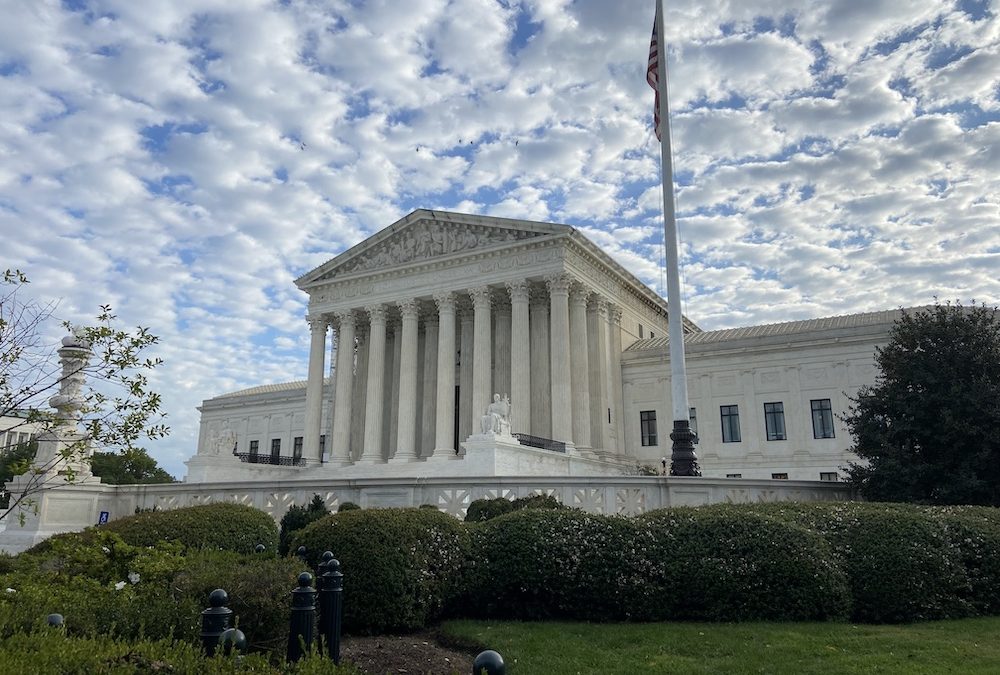The Supreme Court heard oral arguments Tuesday in a case that could impact immigrants who face deportation.
In a case styled Wilkinson vs. Garland, the justices seemed to heavily favor an immigrant who overstayed his visa over U.S. government arguments. A ruling for Wilkinson would give federal courts the ability to review more deportation cases.
Situ Wilkinson came to the United States with a tourist visa in 2003 after threats from police in his home country of Trinidad and Tobago. He remained after his visa expired.
In 2019, he was arrested after authorities found drugs in a house in which he was making repairs.
While these charges were later dropped, Wilkinson caught the attention of the Department of Homeland Security, which began deportation proceedings. In response, Wilkinson filed for what’s called a cancellation of removal to block deportation.
If a cancellation is granted, the person facing deportation could return to or gain status as a legal permanent resident.
To qualify for cancellation, the applicant must meet four criteria: residence in the United States for at least 10 years; no conviction for specific crimes; good moral character; and have a direct family member who would suffer “exceptional and extremely unusual hardship” if the applicant were deported.
An immigration judge ruled against granting Wilkinson a cancellation of removal. Wilkinson’s case met all of the elements except for the unusual hardship requirement.
He argued that his son had health issues, including severe asthma, that his mother could not reliably manage because she suffers from depression.
But the decision was reaffirmed by the Board of Immigration Appeals. Wilkinson appealed again to the Third Circuit Court of Appeals, which in 2022 said it lacked jurisdiction.
This case builds on and should clarify previous cases of Guerrero-Laspilla vs. Barr and Patel vs. Garland. These cases established when federal courts can and cannot accept appeals on immigration cases.
“Exceptional and extremely unusual hardship is often the most difficult requirement to prove for people applying for cancellation of removal cases,” according to the Immigrant Legal Resource Center, an immigrant advocacy group.
Only 4,000 immigrants who face deportation can receive a cancellation of removal per year. According to research from Syracuse University, more than 72,000 people applied between Jan. 20, 2017 and Sept. 30, 2020.
The government’s case, argued by Colleen Sinzdak, an assistant to the solicitor general, centered around concern that if the courts had jurisdiction over appeals, they’d get too many cases, most of which they would reject. Still, this would add to an already overloaded judicial system.
Justice Sonia Sotomayor argued that, while likely true, the value of hearing the cases that did qualify would be more important.
“It’s rare that federal convictions are overturned,” Sotomayor said. “A very low number of federal convictions were overturned, yet we still permit review of them. We permit review not for the majority of cases, we permit review for the exceptions.”
Three groups, including one of former immigration judges and a domestic violence support group, wrote briefs in support of Wilkinson’s position.
One group of former judges argued that allowing circuit courts to take appeal cases would help correct possible issues caused by the resource strain on the Executive Office for Immigration Review.
In its brief, the group stated, “The resource constraints and related pressures on those courts are very real and the possibility of error that they create can have dramatic ramifications both for a noncitizen facing removal and for their family members who are United States citizens and lawful permanent residents.”
The justices are not expected to rule until June.


